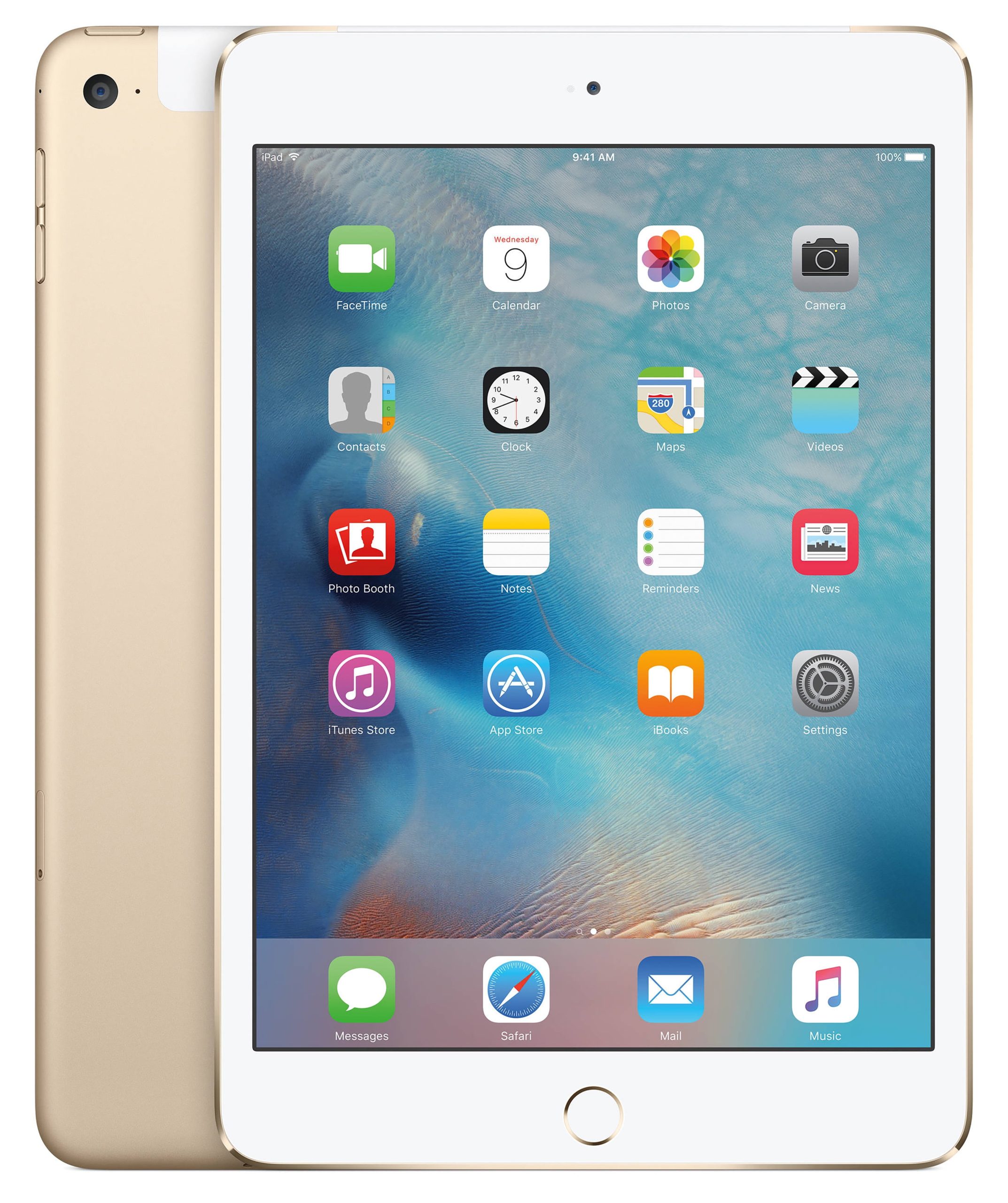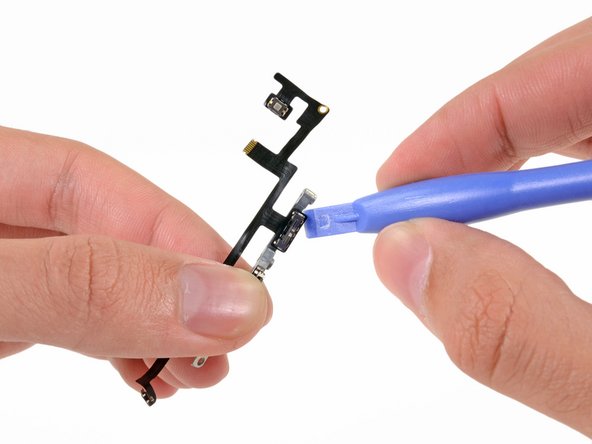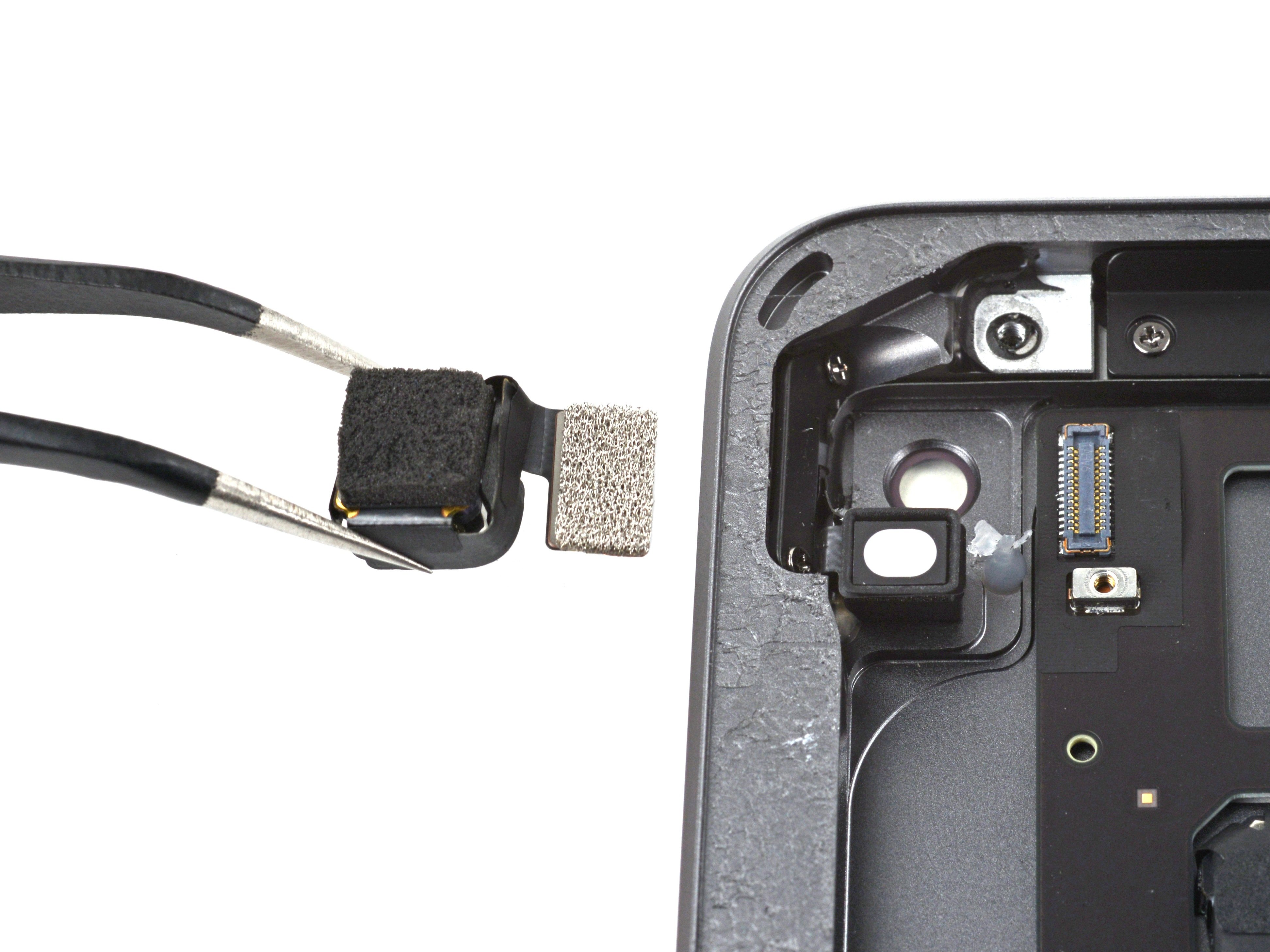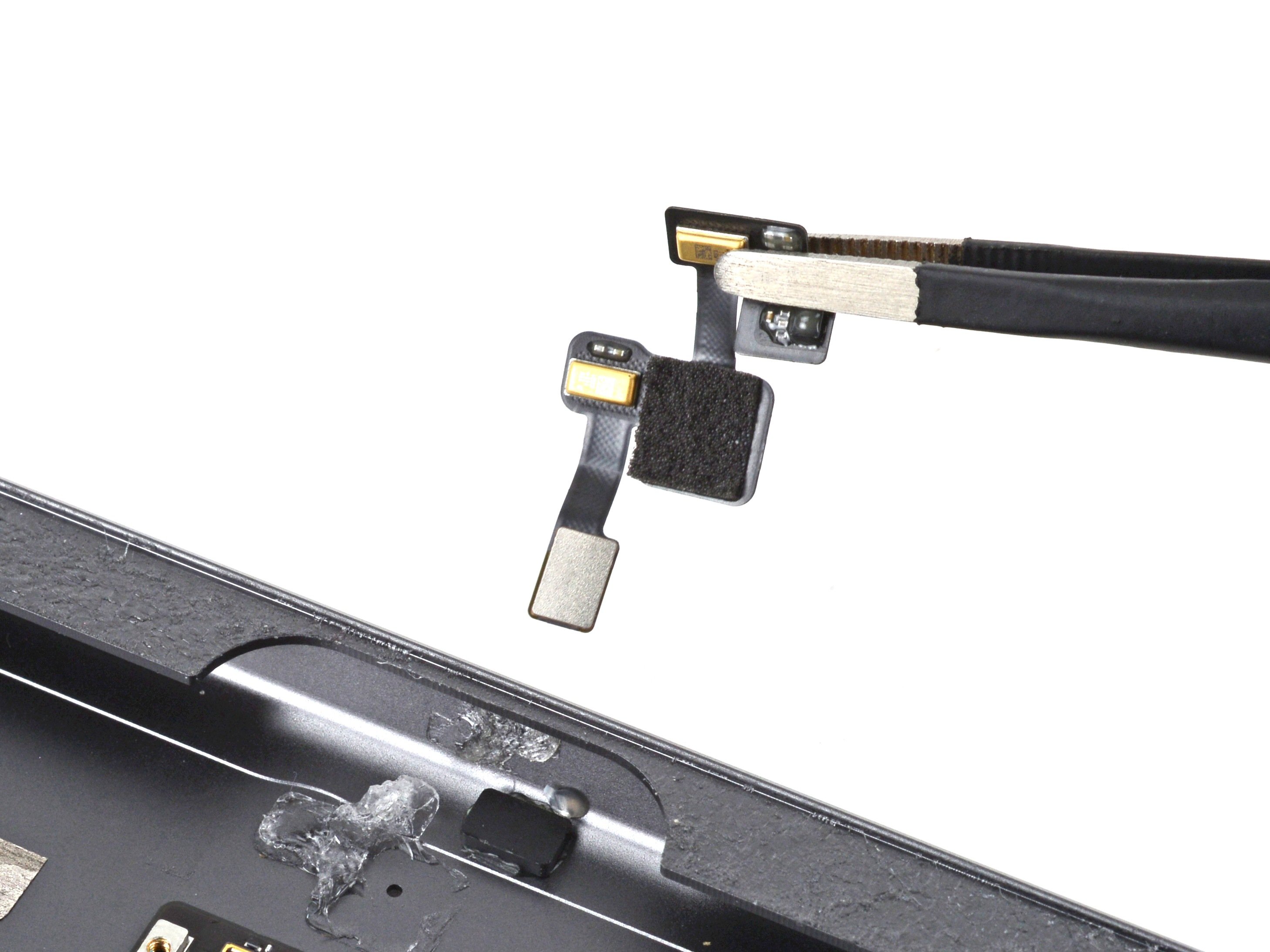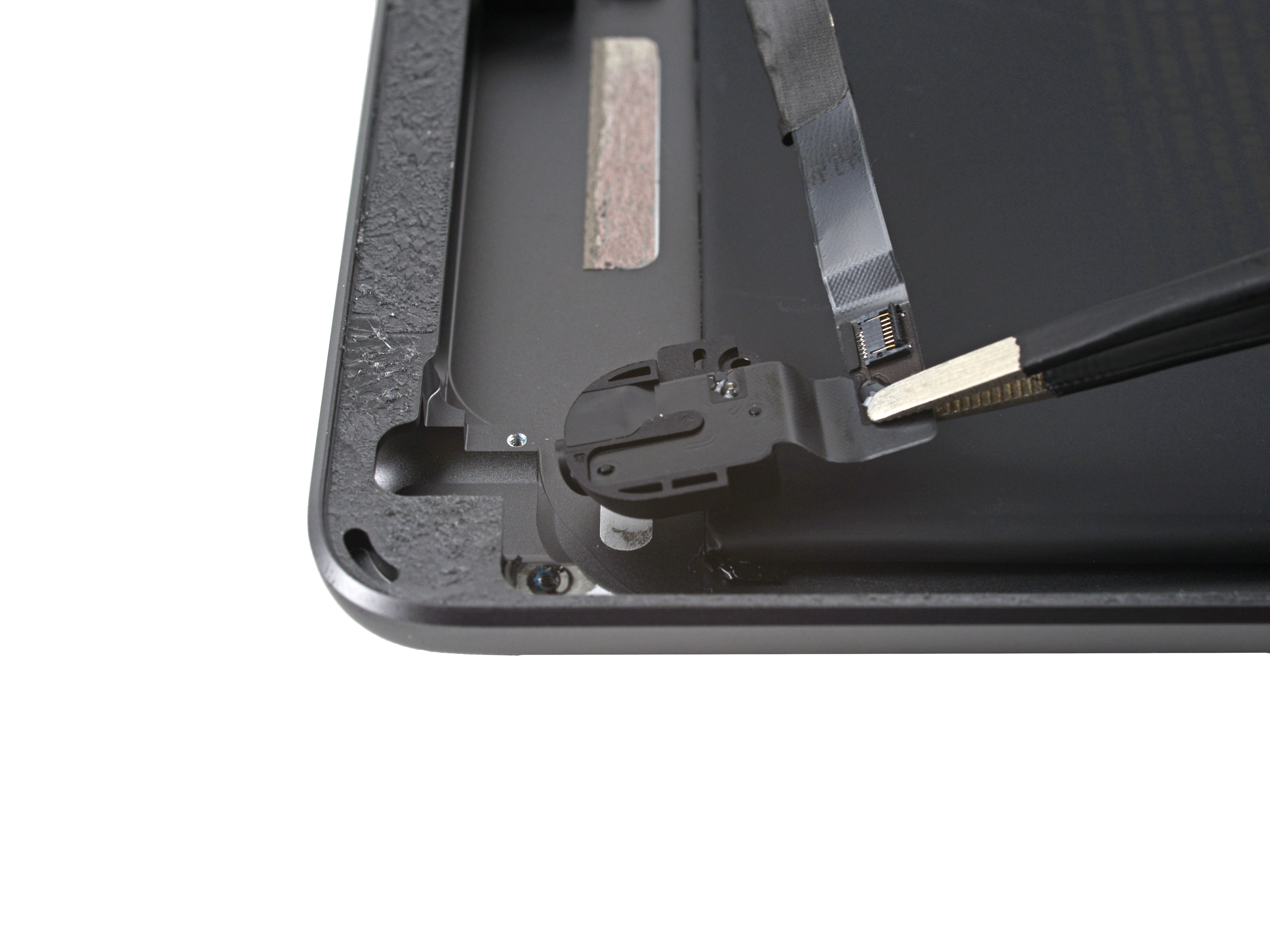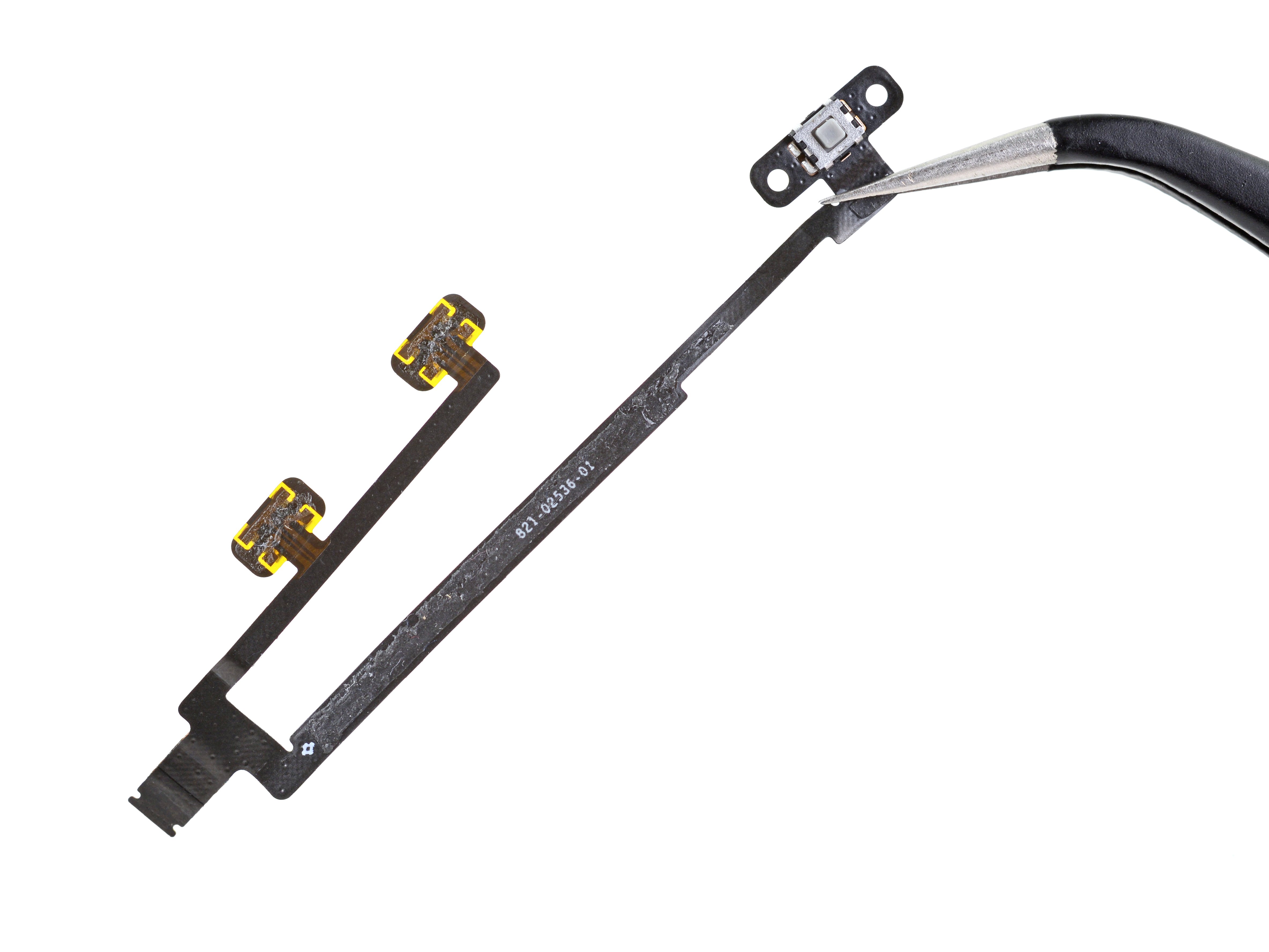iPad 4 GSM Power Volume Buttons Replacement Guide
Duration: 45 minutes
Steps: 71 Steps
Ready to give your power and volume buttons a little makeover? This guide will walk you through the steps! Just a heads up, some parts of this guide were filmed using a Wi-Fi model, so the insides might look a tad different from the cellular version. But don’t worry, the process is basically the same for both—except where we mention otherwise. If you need help, you can always schedule a repair!
Step 1
It’s a good idea to give your microwave a little TLC before diving in, as any sticky residue on the bottom might hitch a ride on the iOpener.
– Pop that iOpener right in the middle of the microwave, like a champ!
Tools Used
Step 2
Keep an eye on the iOpener and avoid turning it into a hot potato! Overheating could lead to an unexpected burst, and we definitely don’t want that. Aim to keep it under 100˚C (212˚F) for safe handling.
If the iOpener looks a bit puffy, steer clear! It’s best to let it chill for a bit.
If the center of the iOpener is still feeling too toasty to touch, hang tight and let it cool down a little longer before you give it another go. A well-heated iOpener should keep its warmth for about 10 minutes, so you’ve got some time to play it cool.
– Give your iOpener a warm-up session in the microwave for thirty seconds. It’s like a spa day for your tool!
– As you work through the repair, keep the iOpener cozy by reheating it for another thirty seconds whenever it starts to chill out.
Tools Used
Step 3
Caution: the iOpener gets super hot, so handle it with care! If things get a little toasty, don’t hesitate to grab an oven mitt.
– Take the iOpener out of the microwave, gripping one of the flat ends to keep your hands safe from the hot center.
Tools Used
Step 4
No microwave? No problem! Just pop your iOpener into a pot of boiling water for a quick warm-up.
– Grab a pot or pan and fill it up with enough water to give your iOpener a nice bath.
– Bring that water to a rolling boil and then turn off the heat. Safety first!
– Now, gently place your iOpener into the hot water and let it soak for 2-3 minutes. Make sure it’s completely submerged—it’s like a spa day for your iOpener!
– Use some tongs to carefully fish out the warmed-up iOpener from the hot water. Watch out, it’s hot stuff!
– Give your iOpener a good drying with a towel. We want it nice and cozy!
– Voilà! Your iOpener is all set and ready for action! If it needs a little more warmth, just repeat the water boiling and soaking steps for another 2-3 minutes. And remember, if you need help, you can always schedule a repair.
Tools Used
Step 5
– Grab your trusty SIM eject tool or a straightened paperclip and give that SIM tray a little nudge to pop it out. It’s easier than it sounds!
Step 6
– Gently slide the SIM tray out of its cozy home and take it out of your iPad.
– If you’re swapping in a new SIM card, just pop the old one out of its tray and slide in the fresh one!
Step 7
Put on those safety glasses to keep your peepers safe, and watch out for that LCD screen – it’s more delicate than it looks!
– If your display glass has taken a hit, let’s keep it from getting any worse and protect yourself during the repair by applying some tape to it.
– Grab some clear packing tape and lay overlapping strips over the iPad’s display until it’s completely covered. You’ve got this!
– Do your best to stick with the rest of the guide as outlined. Just a heads up, once the glass starts breaking, it might keep cracking while you work. You may need to bring in a metal prying tool to help scoop out the glass.
Step 8
Just a friendly reminder: you’ll be dealing with some potentially sharp glass bits during this process, so it’s a good idea to rock some safety glasses to keep those flying shards at bay!
– Place the iOpener flat against the right edge of your iPad, making sure it’s smooth and snug for a solid connection.
– Give it about 90 seconds to work its magic before trying to lift the front panel.
Tools Used
Step 9
Getting that sneaky wedged tip of your opening tool between the glass and plastic might take a little muscle. Just remember to take your time and be gentle! Wiggle that plastic tool back and forth as needed, and you’ll get it sorted in no time.
– Hey there! Spot a tiny gap in the adhesive ring at the upper right corner of your iPad? It’s about 2.0 inches (~5 cm) from the top. Let’s take advantage of this little opening!
– Now, align your tool with the mute button. Gently insert the tip of a plastic opening tool into that gap between the front glass and the plastic bezel. Just slide in the very tip to widen that crack a bit—easy peasy!
Step 11
– With the plastic opening tool snugly placed between the front glass and the plastic bezel, gently slide a plastic opening pick into the gap right alongside the tool. You’re doing great—keep it up!
Step 12
– Gently take out that trusty plastic opening tool from the iPad, and slide the opening pick in a little deeper, about 0.5 inches beneath the front glass. You’re doing great!
Step 14
This adhesive is no joke! It’s super strong, so you might need to put in a bit of elbow grease. Just take your time and be gentle with it!
If you spot the tip of the opening pick peeking out from under the front glass, give it a gentle tug. While sliding the pick in this far won’t cause any harm, it might leave a little adhesive residue on the LCD, so just a heads up!
– While the bottom edge is getting cozy with the warmth of the iOpener, let’s start peeling back the adhesive from the right edge of the iPad.
– Gently slide the opening pick down the edge of the iPad, letting it work its magic and release that adhesive as you go.
Tools Used
Step 15
As you work on peeling off that sticky adhesive, you might want to slide the warmed iOpener back to the right edge of the iPad. Just keep in mind that this could depend on how long the iPad has had a chance to cool down while you were busy being a repair rockstar.
– If the opening pick finds itself stuck in the adhesive, just give it a little ‘roll’ along the edge of the iPad to keep freeing that sticky stuff. You’ve got this!
Tools Used
Step 16
– Before you whip out that first opening pick from the bottom corner of the iPad, slide a second pick under the right edge of the front glass. This little buddy will help keep that pesky adhesive from sticking back down!
– Give your iOpener a quick reheat and then place it at the top edge of the iPad. You’re almost there!
Tools Used
Step 17
The Wi-Fi antenna is snugly secured to the bottom right corner of the rear case of your iPad with screws and a cable. Given the unique positioning of the Wi-Fi antenna, it’s super important to handle this with care to avoid any permanent mishaps. Keep your cool and proceed gently!
– Alright, folks, it’s time to get a bit careful! The next few steps are all about being gentle and precise.
– You’ll need to carefully detach the adhesive that’s holding the antenna to the front panel. But watch out for those delicate parts connecting the antenna to the bottom of the iPad. Take your time and follow the upcoming steps closely.
Step 18
Hey there! Just a friendly reminder: don’t slide that pick any further than the bottom right corner. It could lead to some unwanted Wi-Fi antenna drama!
– Gently glide the opening pick around the bottom right corner of the iPad to release that sticky adhesive. You’ve got this!
Step 19
As you glide that opening pick along the bottom right edge of the front panel, keep in mind that the Wi-Fi antenna is lurking close to the corner. If you accidentally let the adhesive go rogue, you might end up severing it. So, stay sharp and be gentle!
Just a friendly tip: don’t yank that pick all the way out from under the front glass! Instead, gently pull it out just a smidge, leaving about ~1/8″ (3 mm) of the tip still snugly tucked under the glass. You’ve got this!
– Gently glide the tip of your opening pick along the bottom edge of the iPad to loosen that stubborn adhesive over the Wi-Fi antenna. You’ve got this!
Step 20
– Alright, once you’ve gracefully danced past the Wi-Fi antenna (that’s about 3 inches or 75 mm from the right edge, right next to the home button), slide that opening pick back in all the way. You’re doing great!
– Now, give that pick a little slide to the right! This will help break free the adhesive that’s been holding the Wi-Fi antenna snugly against the front glass. Keep up the awesome work!
Step 21
Keep the iOpener cozy, but don’t overdo it! Heat it for no more than a minute at a time, and be sure to give it a little break of at least two minutes before warming it up again.
If the adhesive has gotten a bit too cool along the bottom edge, give that iOpener a little heat-up session to warm things up where you’re working.
– Keep on peeling back that adhesive at the bottom of your iPad! Gently pull the opening pick out far enough to make a nice detour around the home button, then slide it back in to about 1/2 inch (10 mm) once you’ve cleared that home button. You’re doing great!
Tools Used
Step 22
– Keep on peeling that adhesive along the bottom edge of your iPad until it’s all gone!
– Once you’ve made some progress, tuck that opening pick snugly under the front glass close to the home button.
Step 24
If the adhesive has taken a little too long to warm up, just swap the iOpener to the top edge and keep at it. If the iOpener is feeling a bit chilly, give it a little reheat and you’re good to go!
– Gently glide the opening pick along the top edge of your iPad, giving it a little tug to navigate around the front-facing camera bracket.
– This area has some serious adhesive love going on, so you might need to apply a bit of muscle. Take your time and be cautious to avoid any slips that could lead to mishaps with your iPad.
– If the pick feels like it’s stuck in the sticky stuff, just give it a little ‘roll’ as demonstrated in step 9.
Tools Used
Step 25
If the adhesive is feeling cozy and warm, go ahead and take the iOpener off your iPad for a smoother experience. But if it’s still holding on tight, give the iOpener another quick heat-up and place it on the left edge while you work your magic.
– Keep on peeling back that adhesive along the top edge of your iPad, and gently wiggle the opening pick around the top left corner. You’ve got this!
Tools Used
Step 26
Hey there! The digitizer cable is hanging out about 2″ (50 mm) from the bottom of the iPad. When you’re around 2.25″ (60 mm) from the bottom, it’s time to hit the brakes on that pick. You’ve got this!
– Gently glide the opening pick along the left edge of your iPad, letting the adhesive release as you move along. It’s a little less sticky here thanks to the digitizer running the whole left side. Just remember, keep that pick no deeper than about 1/2 inch (10 mm) to avoid any accidental damage to the digitizer. You’ve got this!
Step 27
The digitizer cable is hanging out just about an inch (25 mm) from the bottom of the iPad. So, take your time and be gentle—let’s keep that cable intact!
– With the opening pick still nestled under the bottom edge of your iPad, gently coax the adhesive away from the bottom left corner. You’ve got this!
Step 28
Sometimes, the adhesive around the edges of your iPad might decide to play hard to get and stick back down. If you find yourself in this sticky situation, gently slide a pick underneath the edge of the iPad where the front glass is still hanging on, and give that adhesive a little snip to set it free.
– Grab one of those nifty opening picks and gently pop up the bottom right corner of your iPad. Once it’s lifted, use your fingers to hold it steady. You’ve got this!
Step 29
Watch out for any sticky stuff that might still be clinging on, and grab an opening pick to gently slice through any adhesive that’s still keeping the front panel snug. Stay cool and take your time!
– Grab your iPad by the top and bottom right corners, and gently twist the front glass away from the device. You’ve got this!
– When you’re putting it back together, don’t forget to use a microfiber cloth and some compressed air to give that LCD a little love by cleaning off any dust or fingerprints before you seal it up with the glass.
Step 30
The bottom left screw is hiding behind the home button ribbon cable connector. Gently shift that ribbon cable to the side so you can access and remove the bottom left screw.
– Take out those four 2 mm Phillips #00 screws that are keeping the LCD snugly attached to the aluminum frame. You’ve got this!
Step 31
Handle the LCD with care! That ribbon cable is delicate and could snap if you bend it too much. Keep it cool and steady!
– Grab your trusty plastic opening tool or a spudger and gently lift the right edge of the LCD out of the iPad. You’ve got this!
– Now, give that LCD a little twist along its left edge and lay it down comfortably on top of the front glass panel. Easy peasy!
Tools Used
Step 32
– With the spudger’s tip, gently lift the tape that’s keeping the LCD ribbon cable connector under wraps. You’re doing great!
Tools Used
Step 33
– Gently lift the retaining flap on the LCD ribbon cable ZIF connector.
– With a bit of finesse, use your fingers or tweezers to carefully pull the LCD ribbon cable out of its socket on the logic board.
– If your iPad’s LCD screen is still playing hard to get after you reconnect the ZIF connector, give it a little pep talk! Hold down the power button and the home button together for at least ten seconds until the Apple logo makes its grand appearance.
Tools Used
Step 34
– Gently lift the LCD off the front panel, making sure not to poke at the screen. You’ve got this!
Step 35
If it’s there, go ahead and peel off that piece of electrical tape that’s hiding the Wi-Fi antenna, speaker cable, and home button ribbon cable. You’ve got this!
Step 36
– Gently lift the retaining flap on the home button ribbon cable ZIF connector. Take your time; you’ve got this!
Step 37
– Grab a trusty pair of tweezers and gently pull the home button ribbon cable straight out of its cozy socket on the logic board. You’ve got this!
Tools Used
Step 39
– With the spudger in hand, gently lift the piece of tape that holds the digitizer ribbon cable snugly against the logic board. Take your time and be careful—you’re doing great!
Tools Used
Step 40
– Gently lift the retaining flap on both ZIF connectors for the digitizer ribbon cable. It’s like giving them a little high five!
Step 41
– Gently slide the flat end of a spudger under the digitizer ribbon cable to break free the sticky adhesive holding it down.
– Carefully pull the digitizer ribbon cable straight out of its sockets on the logic board. You’ve got this!
Tools Used
Step 42
– Gently lift the digitizer ribbon cable and grab your trusty spudger. Use the flat end to coax the adhesive loose that’s holding the cable to the rear aluminum case. You’ve got this!
Tools Used
Step 43
– With a gentle tug, slide the digitizer ribbon cable out of its cozy spot in the aluminum frame.
– Carefully detach the front panel from the iPad.
Step 44
– Gently peel away the electrical tape that’s been keeping the headphone jack assembly cable connector snug as a bug.
– With the spudger in hand, give a little nudge to the retaining flap on both ZIF connectors that hold the headphone jack cable to the logic board, flipping them up like a pro.
Tools Used
Step 45
– Gently slide the flat end of a spudger under the headphone jack assembly cable to free it from the sticky embrace of the rear aluminum frame.
– Carefully pull the headphone jack assembly cable straight out from its cozy home on the logic board.
Tools Used
Step 46
– Gently peel back that tape keeping the SIM board cable ZIF connector cozy and say goodbye to it!
– Give a little flip to the retaining flap on the SIM board cable ZIF connector – it’s time to let loose!
– With the finesse of a spudger pro, pull the SIM board cable straight out of its snug socket on the logic board. You’re doing great!
Tools Used
Step 47
– Get ready to tackle those three little 1.75 mm Phillips #00 screws that are keeping the SIM board snug in the aluminum frame. Let’s get this party started!
Step 48
As you gently maneuver the headphone jack assembly cable, remember to take it easy! A little too much tugging could leave the headphone jack feeling lonely and detached. Just be kind and steady, and you’re golden!
– Keep that headphone jack assembly cable out of the way and gently take out the SIM board from the iPad. You’ve got this!
Step 49
– Gently peel back and take off the adhesive tape that’s keeping the headphone jack assembly snug and secure.
Step 50
– Let’s kick things off by unscrewing that single 2.6 mm Phillips #0 screw holding the camera cable to the headphone jack assembly. You’ve got this!
Step 51
– Grab your trusty spudger and gently nudge the front-facing camera out of its cozy spot in the headphone jack assembly.
– While keeping the spudger in place, glide it to the right to free the camera cable from the sticky embrace of the adhesive.
Tools Used
Step 52
– Grab your trusty spudger and gently lift the retaining flap on that microphone cable ZIF connector – it’s just waiting for a little nudge!
– Next, slide the tip of the spudger underneath the microphone ribbon cable and pop it out from its ZIF connector like a pro.
– Now, glide the spudger to the left to break free the adhesive that’s keeping the microphone ribbon cable snug against the headphone jack assembly. You’re doing great!
Tools Used
Step 53
– Gently slide the flat end of the spudger under the antenna connector cable and give it a little nudge to pop it out of its cozy home on the headphone jack assembly board. You’ve got this!
Tools Used
Step 54
– Gently lift the little flap that’s holding down the volume/power button ribbon cable connector to the headphone jack assembly board. It’s like giving it a friendly nudge!
– Carefully detach the volume button ribbon cable from its ZIF connector. Just think of it as unhooking a buddy!
Step 56
– Gently grip the ribbon cable of the headphone jack assembly and smoothly pull it parallel to the iPad, guiding it towards the bottom of the device. You’re doing great!
Step 57
– With both hands, gently grip the headphone jack assembly and carefully pull it away from the iPad, keeping an eye out for any cables that might try to tag along for the ride.
Step 58
The two screws at the top are cleverly angled into the aluminum frame. Remember to keep that screwdriver aligned with the screw like a pro!
– Unscrew the screws that are holding the power and volume button cable to the aluminum frame. You’ve got this!
Step 59
– Carefully peel away the plastic covering the volume buttons like it’s a secret surprise waiting to be revealed.
Step 60
– Carefully take out the single 2.6 mm Phillips #00 screw that’s keeping the volume button frame snug against the aluminum frame. You’re almost there!
Step 61
– Gently slide the edge of a plastic opening tool beneath the sleep/wake sensor, taking care not to harm the delicate cable.
– Carefully maneuver the plastic opening tool around the sensor to free it from the adhesive.
Step 63
– With the pointy end of the spudger in hand, gently lift the adhesive beneath the volume button branch of the ribbon cable. You’ve got this!
Tools Used
Step 65
– With the spudger’s tip still nestled under the ribbon cable, gently coax the power button out of its cozy spot in the aluminum frame.
Tools Used
Step 66
– With both hands on the power & volume button cable, gently wiggle those volume buttons and lock switch out of their cozy spots in the aluminum frame.
– Now, lift that power & volume button cable and say goodbye as you remove it from the rear aluminum case.
Step 67
– Slide the pointy end of your trusty plastic opening tool under the top edge of the power button.
– Gently lift the top part of the power button away from its cozy home on the power button bracket.
Step 68
– Now, let’s flip it over and give that power button a little love—just like we did before! Time to show it who’s boss.
– Gently lift off the power button bracket from the power & volume button assembly. You’re doing great!
Step 69
– Gently slide the tip of your trusty plastic opening tool under the top edge of the rotation lock/mute switch. You’ve got this!
– Now, give that plastic tool a little downward nudge to pop the top side of the rotation lock/mute switch free from its cozy bracket. Easy peasy!
Step 70
– Gently slide the plastic opening tool’s tip beneath the top volume rocker and give it a little nudge upwards to pop it free from the volume buttons bracket.
– Now, just repeat the same delightful process for the bottom volume rocker to release it from the volume buttons bracket.
Step 71
– Gently lift and detach the ribbon cable for the power and volume buttons. You’ve got this!
